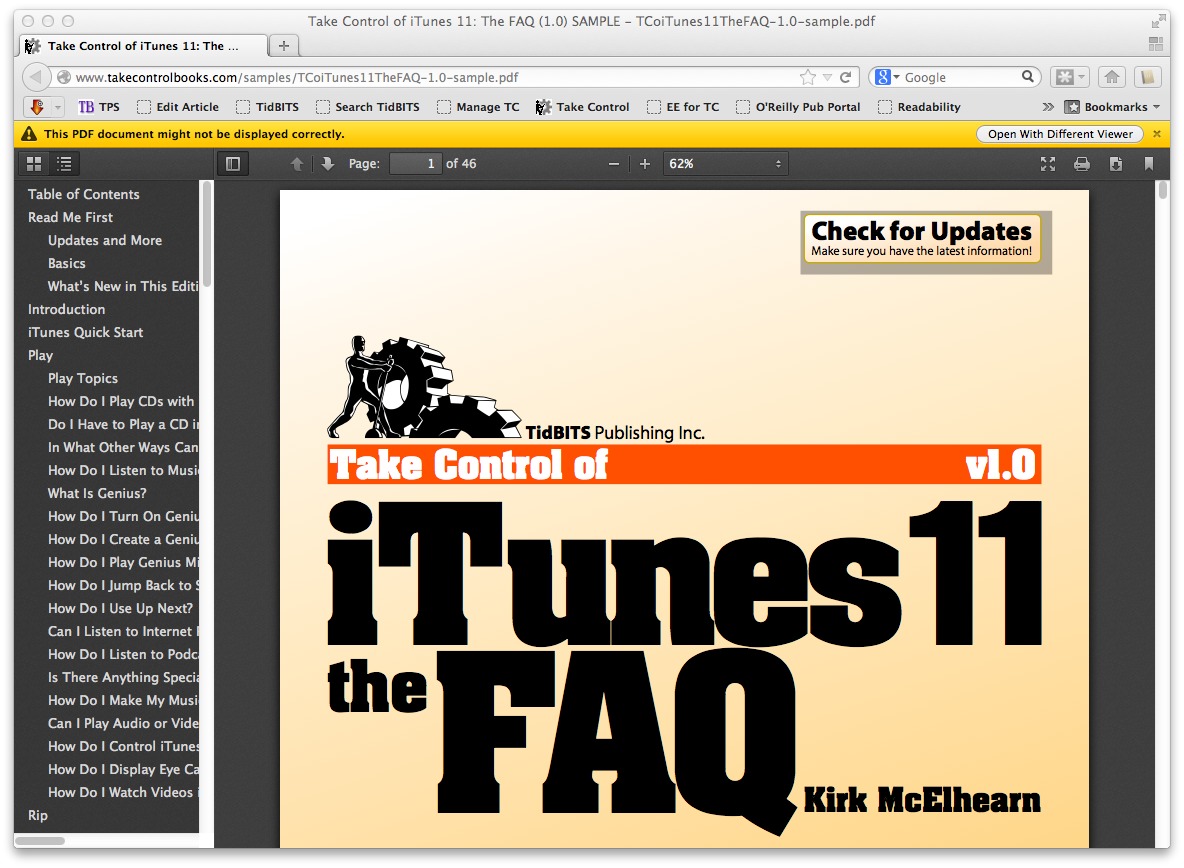Firefox 19
Continuing in its quest to make version numbers as confusing as possible, Mozilla has released Firefox 19 just five weeks after the release of version 18. The big news is that Firefox now boasts an HTML5-based PDF viewer, enabling you to view PDFs directly in the browser window without relying on a Firefox plug-in or downloading the file to examine in your favorite PDF reader. (For a review of the hoops one had to jump through to view a PDF in Firefox before the release of version 19, see Steve McCabe’s “Wrangling PDFs in 2012’s Web Browsers,” 1 June 2012.)
With a few more options than Google Chrome’s built-in PDF viewer, the Firefox PDF viewer offers a full-screen mode, page numbering, several zoom presets, and both thumbnails and bookmarks in addition to standard download, print, and zoom in/out functions. It also provides a way to copy the current view of a PDF into another tab window, which is a handy bookmark workaround when you’re reading through a long document.
Firefox 19 also brings a number of developer-related goodies, including debugger support for pausing on exceptions, a Remote Web Console for connecting to Firefox for Android or the Firefox OS, and the capability to open Web Console CSS links in the Style Editor. (Free, 37.2 MB, release notes)


Say what you will about the numbering scheme, but "as confusing as possible" is absurd. What's less _confusing_ than increasing by 1 per iteration? What, 18 going to 19 is more confusing than, for example, 10.3.2 going to either 10.3.3 or 10.4 or 11.0? Hmmm, I think not.
The standard approach to version numbering is X.Y.Z, where X is a major release, Y is a minor release, and Z is a bug fix with no feature changes. In an effort to keep up with Chrome (which has its own wonky version numbering scheme, but does everything with silent updates so users are never exposed to the version number) and Internet Explorer (which has had more major releases), Mozilla instead is doing Y.0.Z, where everything is a minor release and sometimes there's a bug bad enough to require fixing before the next minor release.
The beauty of the standard approach is that it makes it easy to understand the importance of any particular update, from the present back through the entire history of the application. This was a big one, that one just added a few minor features, this other one merely fixed some underlying bugs, and so on.
With Mozilla's approach, every new version of Firefox looks like it's a big deal until you read the release notes and realize that it's yet another minor release. What happens if they ever actually have a big release? Will everyone have to guess that the jump from 21 to 22 was just massive, while the move from 20 to 21 and from 22 to 23 were really minor?
Perhaps it's not directly related, but Firefox's share of the browser market has slowly declined since Mozilla first released Firefox 4 in 2010 and started down the path of small releases masquerading as large ones.
http://en.wikipedia.org/wiki/File:Usage_share_of_web_browsers_(Source_StatCounter).svg